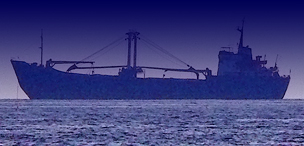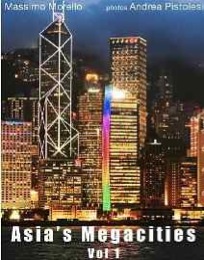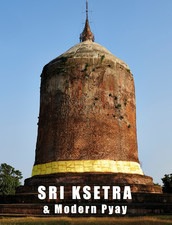Oct 2013
The real dark side
31/10/13 17:20 Filed in: Dispatches
I wanted to write a short story about “Almayer's Folly”. Conrad's book and René Magritte's painting. But I got overwhelmed by all the “cultural” connections and coincidences that seemed to lead back to the disillusions of life. So I decided to drop it. It sounded too forced: the narcissism of the shadows. I have set it all to one side for now.
Then I read something that made me understand that, often, the real mistake lies in relating everything to ourselves. Like looking at your finger while pointing at the moon. The real shadows are the hidden crimes around us. The dark matter.
What I read was the Global Slavery Index 2013. Produced by the Walk Free Foundation (WFF), it analyses the global situation of modern slavery. This includes slavery, slavery-like practices (such as debt bondage, forced marriage and sale or exploitation of children), human trafficking and forced labour, and other practices.
Thirty million people live under these conditions in the world today. Most are in Africa and Asia. The highest number is in the two countries that should represent the planet's future: India and China.
From this perspective, Magritte's painting becomes a kind of symbol.
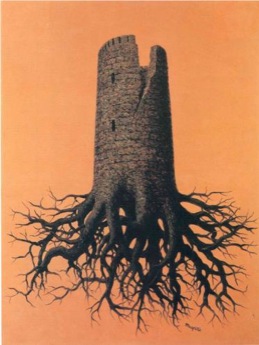
To download the report click here
Then I read something that made me understand that, often, the real mistake lies in relating everything to ourselves. Like looking at your finger while pointing at the moon. The real shadows are the hidden crimes around us. The dark matter.
What I read was the Global Slavery Index 2013. Produced by the Walk Free Foundation (WFF), it analyses the global situation of modern slavery. This includes slavery, slavery-like practices (such as debt bondage, forced marriage and sale or exploitation of children), human trafficking and forced labour, and other practices.
Thirty million people live under these conditions in the world today. Most are in Africa and Asia. The highest number is in the two countries that should represent the planet's future: India and China.
From this perspective, Magritte's painting becomes a kind of symbol.

To download the report click here
0 Comments
Time Being
23/10/13 12:06 Filed in: Stories
The house cat is called Schrödinger. He is the key to everything. In the sense that he can be a being and a non-being at the same time. The cat's name recalls the paradox of physician Erwin Schrödinger, one of those mental quantum mechanics experiments that are as fascinating as they incomprehensible.
Schrödinger is a character in A Tale for the Time Being, the latest novel by Ruth Ozeki.

“A time being is someone who lives in time, and that means you, and me, and every one of us who is, or was, or ever will be,” writes the author and Zen monk in the first few lines. This too can sound like a quantic affirmation: time can be experienced only as a series of interdependent relationships. This thesis was made approximately eight hundred years ago by Dogen Zenji (1200-1253), one of Japan's greatest thinkers and masters of Zen Buddhism, in his essay Time Being. Ozeki is on the record as saying this man was an inspiration for her novel.
From that point of view, the book might look like just another post-new-age story. But in fact - as its appearance on the prestigious Man Booker Prize 2013 shortlist indicates - it is a complex novel, weaving together mystery and meditation, history and record, different space-time levels.
It is brilliant, in my opinion.
But, aside from my opinion, it can be said to be about various subjects. About writing as a “form of prayer”. “You’re not praying to a god, but you’re almost conjuring a reader to arrive,” says Ozeki, comparing writers to people who “hear voices”. “People have always heard voices. Sometimes they’re called shamans, sometimes they’re called mad, and sometimes they’re called fiction writers.”
Schrödinger, the physician and the cat, the monk, the shaman, the writer and all the characters in this novel demonstrate, in turn, how philosophical novels can be written. Which has been and is still called into question by many. According to a very Western, limited vision, they belong to two different worlds, they require different ways of thinking and writing.
A Tale for the Time Being, then, is just another work in the great search for truth, the latest in the eternal struggle between art and philosophy.
The tale, the “récit” on Les Aventures de la vérité, is still on show at the Fondation Maeght in Saint Paul-de Vence, France. Curated by Bernard-Henri Lévy, it attempts to show, as the philosopher-adventurer wrote, “the slightly crazy project of telling and interweaving the history of philosophy and painting”. What he says about painting can also be applied to literature: “I really believe that its first vocation, its primary role, is to think, and to make us think, about the world.”
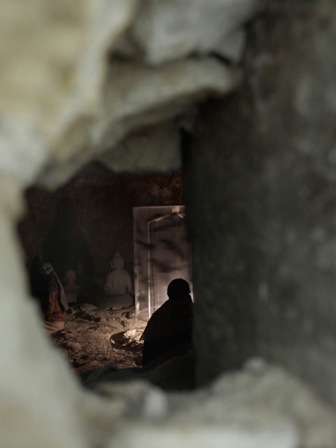 “Caverne de Platon”, by Huang Yong Ping, from “Les Aventures de la Vérité”
“Caverne de Platon”, by Huang Yong Ping, from “Les Aventures de la Vérité”
All of this cannot be easy, as the prophets of uncultured thinking would have us believe. Once again the key to everything is Schrödinger's cat. You have to choose whether to live in a box and stay trapped in the paradox for ever, or to open the box. To begin with, we will open the Hello Kitty lunchbox that contains the tale of the time being.
Schrödinger is a character in A Tale for the Time Being, the latest novel by Ruth Ozeki.

“A time being is someone who lives in time, and that means you, and me, and every one of us who is, or was, or ever will be,” writes the author and Zen monk in the first few lines. This too can sound like a quantic affirmation: time can be experienced only as a series of interdependent relationships. This thesis was made approximately eight hundred years ago by Dogen Zenji (1200-1253), one of Japan's greatest thinkers and masters of Zen Buddhism, in his essay Time Being. Ozeki is on the record as saying this man was an inspiration for her novel.
From that point of view, the book might look like just another post-new-age story. But in fact - as its appearance on the prestigious Man Booker Prize 2013 shortlist indicates - it is a complex novel, weaving together mystery and meditation, history and record, different space-time levels.
It is brilliant, in my opinion.
But, aside from my opinion, it can be said to be about various subjects. About writing as a “form of prayer”. “You’re not praying to a god, but you’re almost conjuring a reader to arrive,” says Ozeki, comparing writers to people who “hear voices”. “People have always heard voices. Sometimes they’re called shamans, sometimes they’re called mad, and sometimes they’re called fiction writers.”
Schrödinger, the physician and the cat, the monk, the shaman, the writer and all the characters in this novel demonstrate, in turn, how philosophical novels can be written. Which has been and is still called into question by many. According to a very Western, limited vision, they belong to two different worlds, they require different ways of thinking and writing.
A Tale for the Time Being, then, is just another work in the great search for truth, the latest in the eternal struggle between art and philosophy.
The tale, the “récit” on Les Aventures de la vérité, is still on show at the Fondation Maeght in Saint Paul-de Vence, France. Curated by Bernard-Henri Lévy, it attempts to show, as the philosopher-adventurer wrote, “the slightly crazy project of telling and interweaving the history of philosophy and painting”. What he says about painting can also be applied to literature: “I really believe that its first vocation, its primary role, is to think, and to make us think, about the world.”
 “Caverne de Platon”, by Huang Yong Ping, from “Les Aventures de la Vérité”
“Caverne de Platon”, by Huang Yong Ping, from “Les Aventures de la Vérité”All of this cannot be easy, as the prophets of uncultured thinking would have us believe. Once again the key to everything is Schrödinger's cat. You have to choose whether to live in a box and stay trapped in the paradox for ever, or to open the box. To begin with, we will open the Hello Kitty lunchbox that contains the tale of the time being.
A Tale for the Time Being by Ruth Ozeki -- Official Book Trailer from Viking Books on Vimeo.
Melanie’s World
04/10/13 15:57 Filed in: Logbook
Melanie attached the image of a pirogue with two fishermen on board onto a piece of the wooden fishing boat washed up on a beach in the Philippines. These boats have then been reincarnated in The Explorer. I look at it on a wall at home. While he seems to watch the river, the Chao Phraya, through the window.
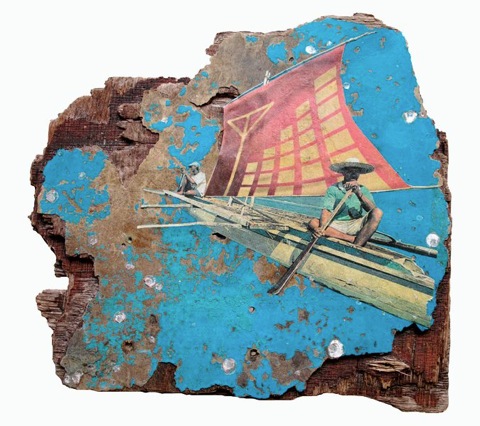
I imagine that I am on that pirogue, which from here seems to head towards the river and then into the Gulf of Thailand. Before perhaps heading to the Philippines. Or to Borneo, the Indonesian islands, a dot in the Sixth Continent.
It is one of those times that you ask yourself that same old question: “What am I doing here?” It's all you can think about and you lose yourself like a sailor losing his way on the ocean, not knowing which port to make for or having no final destination. He just keeps sailing as though on a ghost ship.
There is a feeling of being out of one's depth, and at the same time stranded and lost. Which might explain my long absence from Bassifondi. But it's good to take a break now and then. Like waiting for the prevailing wind to decide for you.
The Explorer is one of the works in Melanie's latest exhibition, entitled Traces. She gave it this name because, she says, she wanted those pieces of wood to deliver a message: less chaos, more essence.
Melanie Gritzka del Villar, a vague mixture of Louise Brooks and Frida Kahlo, is a half-German, half-Filipino artist who lives in Asia and Europe. It is probably this hybrid, cosmopolitan nature that characterises her work, both in the technique, using collages of different materials, and in the content, puzzles of different worlds.
For now, Melanie's world is in Bangkok. Her studio, in the popular north-eastern district, is inside a grey building where her fellow artists, designers and creatives of the “Thai post-modern art society” are based. It is called Hof Art and has a Bauhaus-like image, underlined by the name Hof , which recalls the German “place”. In fact, Hof is an acronym of Highly Optimistic & Friendly.
The Explorer led me to Melanie’s world. It was like a breath of fresh air.

I imagine that I am on that pirogue, which from here seems to head towards the river and then into the Gulf of Thailand. Before perhaps heading to the Philippines. Or to Borneo, the Indonesian islands, a dot in the Sixth Continent.
It is one of those times that you ask yourself that same old question: “What am I doing here?” It's all you can think about and you lose yourself like a sailor losing his way on the ocean, not knowing which port to make for or having no final destination. He just keeps sailing as though on a ghost ship.
There is a feeling of being out of one's depth, and at the same time stranded and lost. Which might explain my long absence from Bassifondi. But it's good to take a break now and then. Like waiting for the prevailing wind to decide for you.
The Explorer is one of the works in Melanie's latest exhibition, entitled Traces. She gave it this name because, she says, she wanted those pieces of wood to deliver a message: less chaos, more essence.
Melanie Gritzka del Villar, a vague mixture of Louise Brooks and Frida Kahlo, is a half-German, half-Filipino artist who lives in Asia and Europe. It is probably this hybrid, cosmopolitan nature that characterises her work, both in the technique, using collages of different materials, and in the content, puzzles of different worlds.
For now, Melanie's world is in Bangkok. Her studio, in the popular north-eastern district, is inside a grey building where her fellow artists, designers and creatives of the “Thai post-modern art society” are based. It is called Hof Art and has a Bauhaus-like image, underlined by the name Hof , which recalls the German “place”. In fact, Hof is an acronym of Highly Optimistic & Friendly.
The Explorer led me to Melanie’s world. It was like a breath of fresh air.


